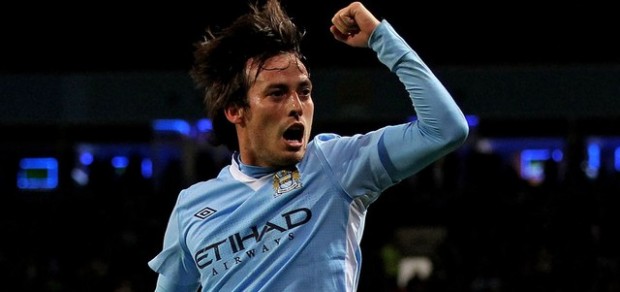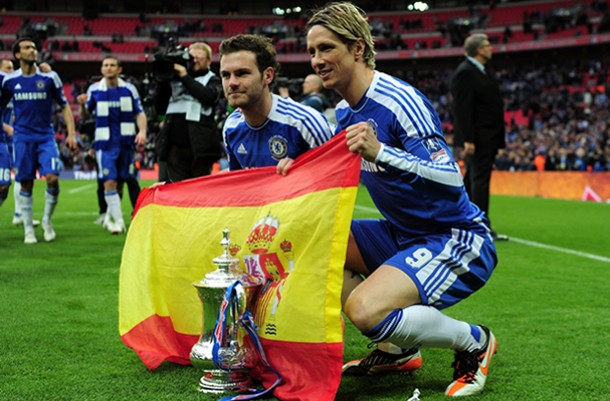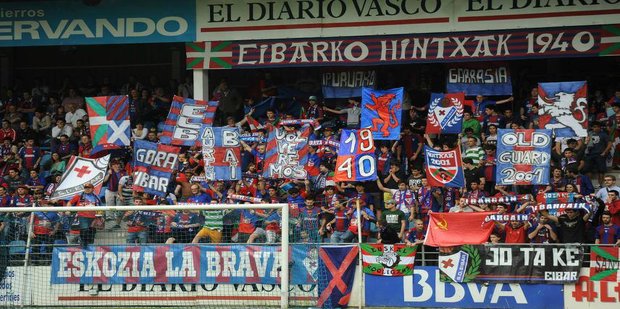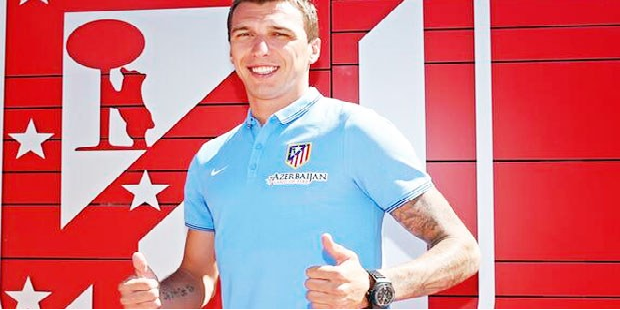- S.D. Eibar ready for maiden La Liga outing
- SD Eibar stengthen ahead of debut La Liga season
- Can ‘Super Mario’ live up to expectations in Madrid?
- MAN IN THE GROUND – Brentford 0 – 4 Osasuna
- Historic Basque derby welcomes S.D. Eibar to La Liga
- Munich to Madrid, via Brazil – Tony Kroos
- Rakitic in Spanish Switch
- Can Spain find redemption in Rio?
- Viva Espana! A season of redemption for Spanish football
- From the old to the new: who can fill the void in years to come for La Roja?
Spanish Success, British Beginnings – Why La Liga has much to be thankful for
- Updated: 30 June, 2012


Of the 44 players that started the two Uefa 2012 Semi Finals this week, you may be surprised to learn that just four currently ply their trade in the English Premier League.
On the other side of the coin however, 15 of the players that began the game for Spain, Germany and Portugal are currently playing at clubs in La Liga and despite none of the Italian side featuring in the Spanish league, they still had almost four times as many as their English counterpart.
Supporters of the English game may point to Chelsea’s successful march to Uefa Champions League glory as proof that the Premier League is still the strongest in the world, however these statistics just may tell a different story.
Add to the equation the poor showing of the other English participants involved in Uefa’s two club competitions last season – including then Champions Manchester United being thoroughly outplayed by mid-table Athletic Club, and it surely suggests Spain’s La Liga is the dominant domestic league in the sport.
Ultimately it’s irrelevant of course, and both competitions offer some fantastic football to fans around the world. However, with the Spanish national team on the verge of an unprecedented third consecutive tournament triumph, it is undoubtedly Spanish players that currently hold sway.
The impact of Spanish players or players who have featured in the Spanish league has also been substantial on the English game in recent years, with a number of players now featuring for some of the Premier League’s top clubs.
Former Valencia midfield star David Silva was voted Player of the Season at Manchester City last month as Roberto Mancini’s side clinched their first league title in 44 years and the diminutive schemer was also named in the Premier League Team of the Season after a fantastic campaign.
This is no surprise really, as Silva is a special player and has become a firm fan favourite at Eastlands since he arrived in Manchester in June 2010.
City fans are obviously grateful to their Spanish import but it seems the Premier League as a whole has much to thank La Liga for.
Alongside side Silva, they have Argentine hitman Sergio ‘Kun’ Aguero who, although not Spanish, developed into the world-class talent he is today during a five years stint at Atletico Madrid.
Juan Mata has been in imperious form since arriving at Chelsea last summer and Fernando Torres has finally shown glimpses of the devastating ability exhibited during his time at Liverpool.
It is indicative or the current talent in Spanish football and is something which is obviously backed up by the dominance of the national team from youth level up to Del Bosque’s senior side.
Given the overwhelming superiority of the Spanish game then, it would be fair to assume that La Liga would cope pretty much fine without any contribution from this fair isle. And that would probably be correct.
This however, is forgetting the massive impact British football and its players have had on the development of the sport in Spain. Paradoxically, without the English league system, the Spanish game could be a footballing backwater.
It’s all a matter of history. A history dating back over one hundred years.
There has always been debate in Spain on the subject of it’s oldest professional club, and when it was formed, and the answer probably depends on where in the country you are from.
The majority of people accept that the formation of Recreativo de Huelva on 23 December 1889 gives them the proud title, however football fans in the Basque country may tell you differently.
They hold firm that Athletic Club de Bilbao are the oldest as they got together one year earlier, although they only made it official in 1901 after merging with another local side.
Despite this disagreement however, one thing that is certain is who brought the game of football to Spanish shores in the lead up to the explosion of newly formed clubs around the country at the turn of the 20th century.
As Spain began the huge task of building it’s own railroad network from it’s southern shores, across the plains of Castilla and up to the industrial regions in the north, there was a massive influx of British workers who arrived from the industrial towns of northern England and Scotland.
These workers brought with them their favourite pastime of foot-ball (as it was then known), and the game soon caught the interest of the curious locals.
Football in Britain had been organised for a number of years, the English Football League had it’s first season in 1888, and former players and fans of their teams were at the forefront of establishing the first Spanish clubs (let’s not get back into that one…).
These clubs emerged in the ports and railroad towns around the country and the British involvement is easy to see in the Anglicized names the new teams chose; Recreation Club Huelva, Athletic Club de Bilbao, Foot-ball Club Barcelona, Sevilla Football Club – the list goes on.
Many clubs also chose the colours of their founders’ favourite teams from home – Athletic Club’s red and white shirts with black shorts is an homage to either Southampton or the more probable, Sunderland, and Barcelona’s famous blaugrana has rumoured links with unassuming London-club Crystal Palace (although more likely to be from their first president’s boy-hood team, FC Basle).
As the popularity of football spread, so did the appeal of travelling to Spain to play for it’s new teams. By the time the inaugural La Liga kicked off in 1929, there had been a huge flood of British footballing talent (and probably not-much-talent) playing for clubs around the country.
FC Barcelona have the honour of winning the first La Liga title and, although coached by the Catalan Romà Forns, had a strong British influential.
In fact Barça had mainly been coached by Britons since it’s formation in 1899. The names of Jack Greenwell, Ralph Kirby and James Bellamy all feature heavily during the 1920’s and 30’s.
Another leading manager in Spain during this period was also a man who, although Irish, had learnt his trade in the English league. Patrick O’Connell, who managed six clubs in Spain, including Barça, played for the English sides; Sheffield Wednesday, Hull City and Manchester United.
The most famous British manager of La Liga’s formative years however, was ‘the man in the bowler hat’ Fred Pentland. Wolverhampton-born Pentland spent almost 20 years in Spain but is most revered in the city of Bilbao where he had his greatest success.
Athletic Cub won back-to-back league tiles in 1930 and 1931 with ‘el mister’ at the helm and he is honoured with a bronze statue in the Basque city.
The British influence steadily declined after the end of the Civil War and other countries grew in stature – South America soon became a prime supplier of talent for the league, and many other European countries began exporting their own style of football.
We witnessed the ‘magnificent’ Magyar influence in the 1950s and then the Dutch brought ‘Total Voetbal’ in the late sixties and seventies. Spain also began producing stars of their own and soon became a dominant power in their own right.
There have been some notable British individuals in the La Liga over the last 30 years; John Toshack, Sir Bobby Robson and Terry Venables all had some managerial success, while Steve Archibald, Laurie Cunnigham, Gary Linekar, Steve McManaman and David Beckham have probably been the pick of the player success stories but in truth, the Spanish game doesn’t need the British influence anymore.
It has the best league in the world and produces many of the best footballers in the world, why would Spain need any help from us?
Well those who know their history may just be able to point to the fact that, without British football, Spain’s current dominance would only be an idyllic pipe dream.
Follow @icentrocampista






You must be logged in to post a comment Login